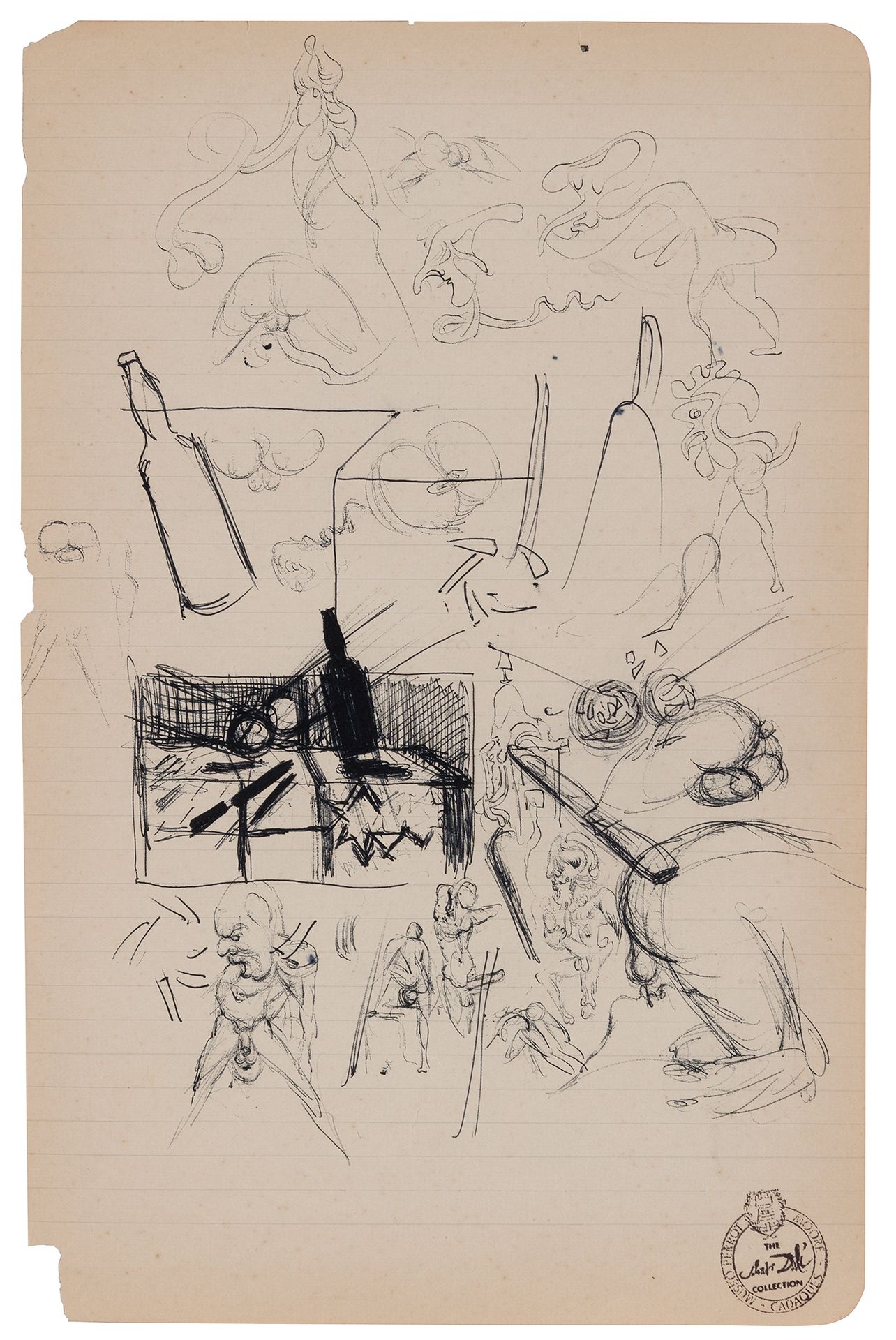Description
SALVADOR DALÍ Y DOMÈNECH (Figueres, Girona, 1904 - 1989).
SALVADOR DALÍ Y DOMÈNECH (Figueres, Girona, 1904 - 1989). "Etude por le tableau Nature morte vivante (1956) et croquis éroques", circa 1956. Black ink on paper. Stamp of the Perrot-Moore collection. Attached certificate issued by Archives Descharnes, file number: d 6976. Presents frame with faults and damages. Measurements: 30.8 x 20 cm; 57 x 51 cm (frame). In this study made around 1956, Salvador Dalí presents a still life where the objects that make up the still life are levitating with respect to the table, such as bottles and fruits (or spheres). A mode of representation that he later developed in the painting of the same name, which is in the Salvador Dalí Museum in St Petersburg, Florida. Thus describing what Dalí called "nuclear mysticism", where objects are part of the space independently, floating in a concrete and conceptual area, a revolutionary feature in the world of pictorial representation. In this sketch, Dalí not only presents this innovation, but also sketches several bodies, or anatomical sections with a high erotic content, a frequent feature in many of his works. It is worth noting that the work bears the hallmark of the Perrot-More collection, whose owner, John Peter Moore, was Dalí's personal secretary, who worked with the artist from 1960 to 1974. During his early years, Dalí discovered contemporary painting during a family visit to Cadaqués, where he met the family of Ramón Pichot, an artist who traveled regularly to Paris. Following Pichot's advice, Dalí began to study painting with Juan Núñez. In 1922, Dalí stayed at the famous Residencia de Estudiantes in Madrid to begin studying Fine Arts at the San Fernando Academy. However, before his final exams in 1926, he was expelled for claiming that there was no one there fit to examine him. That same year Dalí traveled to Paris for the first time. There he met Picasso, and established some formal characteristics that would become distinctive of all his work from then on. His language absorbed the influences of many artistic styles, from classical academicism to the most groundbreaking avant-garde. At that time, the painter grew an eye-catching moustache imitating Velázquez's, which would become his personal trademark for the rest of his life. In 1929, Dalí collaborated with Luis Buñuel in the making of "An Andalusian Dog", in which scenes from the surrealist imaginary were shown. In August of that same year he met his muse and future wife Gala. During this period, Dalí held regular exhibitions in both Barcelona and Paris, and joined the surrealist group based in the Parisian neighborhood of Montparnasse. His work greatly influenced the direction of surrealism for the next two years, and he was hailed as the creator of the paranoiac-critical method, which was said to help access the subconscious by releasing creative artistic energies. The painter landed in America in 1934, thanks to art dealer Julian Levy. As a result of his first individual exhibition in New York, his international projection was definitively consolidated, and since then he has been showing his work and giving lectures all over the world. Most of his production is gathered in the Dalí Theater-Museum in Figueras, followed by the collection of the Salvador Dalí Museum in St. Petersburg (Florida), the Reina Sofía in Madrid, the Salvador Dalí Gallery in Pacific Palis.
77
SALVADOR DALÍ Y DOMÈNECH (Figueres, Girona, 1904 - 1989).
